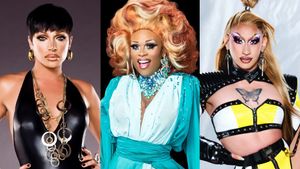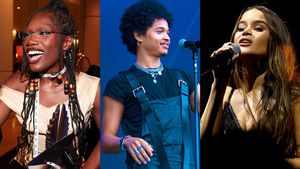As we approach the 2024 election, the landscape for LGBTQ advocacy feels fraught with challenges, particularly for transgender, nonbinary, and gender nonconforming youth. The surge of anti-trans sentiment in legislative bodies and communities is disheartening, with over 400 anti-trans bills pending in legislatures nationwide, and hate crimes against LGBTQ youth rising at alarming rates in schools where states have introduced discriminatory legislation. It's a daunting reality, and one that can easily lead to frustration and disillusionment among advocates.
Keep up with the latest in LGBTQ+ news and politics. Sign up for The Advocate's email newsletter.
Although the multifaceted opposition to trans rights appears relentless, emerging in numerous forms, it mirrors historical challenges encountered during the gay liberation movement of the 1970s, many of which were ultimately overcome, but it took time and cost lives. Today, we see a convergence of pathologization, legislative attempts to ban fundamental rights like participation in youth sports and access to healthcare, and the dissemination of religious- and moral-based misinformation about the societal impact of gender diversity. These tactics aim to delegitimize transgender identities, perpetuate harmful stereotypes, and justify discriminatory policies under the guise of protecting public health and morality. This narrative — and the process of progress — is neither new or linear. It replicates a similar one where homosexuality was pathologized, criminalized, and condemned by religious institutions, creating a pervasive culture of fear, misinformation, stigma and discrimination.
While the “gay liberation” movement is far from over and continues to be challenged and targeted alongside transgender rights across the country today, society has come a long way toward advancing civil liberties and changing public sentiment in the direction of inclusion. These successes were the result of efforts that were spearheaded by brave activists across disciplines; i.e. Dr. John Fryer and the “gay P.A.” demanding the American Psychological Association refute “homosexuality” as a mental health disorder; alternative journalists covering issues pertinent to lesbian, gay, and bisexual issues; and religious institutions like the MCC church who pushed for inclusive faith spaces and challenged homophobic interpretations of scripture, which paved the way for more mainstream denominations to do the same. In the face of societal stigma and professional risks, the multifaceted efforts of activists on the ground effectively challenged prevailing norms and advocated for equality. Their courage also paved the way for significant advancements in civil liberties and set a precedent for the current struggle for transgender rights. What we have not done is build the kind of support infrastructure that can adequately fight the battle for trans folx the way we have for LGB people. And we need to double down on that work to make up some ground now.
That said, the past can serve as a guide or predictor. The parallels between the current fight for transgender rights and the historical battles for gay liberation are as striking as they are hopeful. And we can learn from them if we are willing.
Today, we see a similar effort from the APA to publicly de-pathologize gender-variance, journalists like Erin Reed and Evan Urquhart bravely debunking misinformation and responding to misguided reporting of transgender issues, and religious institutions pushing back on transphobic interpretations of faith. Grassroots movements are advancing trans-affirming policies in school districts across the country, and national task forces are lobbying for legislative reform. The increasing visibility of transgender and gender-nonconforming individuals in media, and growing institutional support for transgender rights offer glimmers of hope in an otherwise challenging landscape. Despite the relentless legislative efforts to impede progress for transgender individuals nationwide, these battles are gradually being dismantled in courtrooms across the country, largely due to the relentless efforts of grassroots activists and the advocacy of organizations such as the ACLU and others. The journey ahead may be challenging, but past victories are undeniably being replicated as current triumphs. These achievements stand as a testament to the resilience and determination of the LGBTQ+ community and serve as beacons of hope as we continue our fight for equality and justice.
As we commemorate Transgender Day of Visibility, it is important to take inventory of where we are as a movement and the work that lies ahead but also to look back in time to how far we have come and the legacy of progress that we carry forward with us.
Just as the struggles of the gay liberation movement in the 1970s paved the way for significant advancements in civil liberties, so too will our continued advocacy and resilience lead to a more inclusive and equitable future for transgender and gender-diverse individuals and their families. But we must commit. We owe it to our trans and non-binary siblings, who are indeed on the “front lines of the culture wars.”
Laura Hoge is a Licensed Clinical Social Worker in New Jersey and the Clinical Director at Spectrum Health & Wellness.
Views expressed in The Advocate’s opinion articles are those of the writers and do not necessarily represent the views of The Advocate or our parent company, equalpride.














































































